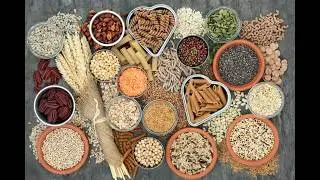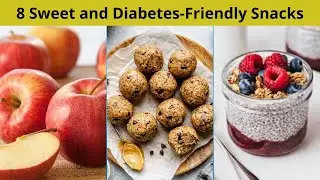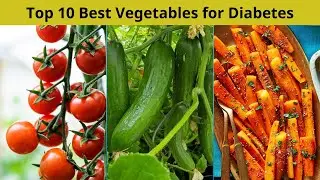Top 10 Best Vegetables for Diabetes | Nuse Healthy
1. Carrots
The fiber in vegetables helps us feel full and satisfied. Weisenberger recommends carrots as an especially filling, high-fiber vegetable. Carrots are also high in vitamin A, which helps with immunity and healthy eyes. Try them in our Balsamic Oven-Roasted Carrots.
2. Broccoli
In addition to helping with satiety, the fiber in vegetables acts as a prebiotic. "Prebiotic fibers are fermented by our gut bacteria, helping them to thrive," says Weisenberger. "In some cases, this helps with glucose and cholesterol metabolism." Broccoli is a great choice for this, as are other cruciferous vegetables.
3. Zucchini
According to a 2021 study in Food Chemistry: Molecular Sciences, carotenoids—including the lutein and zeaxanthin that zucchini contains—support heart health and may protect against certain cancers. Zucchini is also low in calories and high in fiber, Weisenberger points out.
4. Cabbage
If you have diabetes, there is a time and a place for orange juice, but chugging it in hopes of an immunity boost might not be the best choice. Enter cabbage. Like OJ, it, too, is high in vitamin C, which may positively affect heart health, according to a 2020 review in the journal Antioxidants. It's also got tons of fiber to slow the digestion of whatever you're eating alongside it, which can help prevent blood sugar spikes. For a delicious twist on cabbage, try our Roasted Cabbage with Chive-Mustard Vinaigrette.
5. Spinach
Like all leafy green vegetables, spinach is nutrient-dense and very low in calories. It's also rich in iron, which is key to healthy blood flow. According to a 2020 study published in Nutrition Journal, spinach also contains membranes called thylakoids, which house substances that may help with insulin sensitivity. You can add spinach to soups or stews, throw a handful into your eggs in the morning or sauté it for a simple side dish.
6. Tomatoes
Weisenberger suggests stuffing extra tomatoes into a whole-grain sandwich. In addition to adding color to your sandwich and dishes, tomatoes are high in lycopene. Lycopene is a compound that has been linked to a host of health benefits, including a lower risk of heart disease and certain cancers, as well as aiding blood glucose levels, according to a 2020 review in the journal Antioxidants. Tomatoes are tasty as is, or try roasting them to bring out their natural sweetness.
7. Cucumber
Another of Weisenberger's favorite sandwich fillings, cucumber is a high-water vegetable that can help keep you hydrated, as well as feeling full. A 2022 review in the journal Molecules found that members of the Cucurbitaceae family of produce, including cucumbers, may lower and control blood sugar levels and reduce inflammation throughout the body. Try our simple Cucumber & Avocado Salad.
8. Lettuce
Different types of lettuce contain different nutrients, but all are high in fiber and water. In particular, just 1 cup of red-leaf lettuce packs in 33% of your daily vitamin K needs, per the USDA. Vitamin K is important for blood clotting and bone health. Serving other foods over a bed of lettuce can also help slow their absorption, further contributing to blood sugar control. Using lettuce in place of pizza crust or tortillas is a great way to help prevent a blood sugar spike but still get all the flavor when you're craving your favorite foods.
👍 Donate Paypal: https://bit.ly/41KbJqP
SUBSCRIBE to Nuse Healthy : / @nusehealthy
👍 Donate Paypal: https://bit.ly/41KbJqP
SUBSCRIBE to Nuse Healthy : / @nusehealthy



















